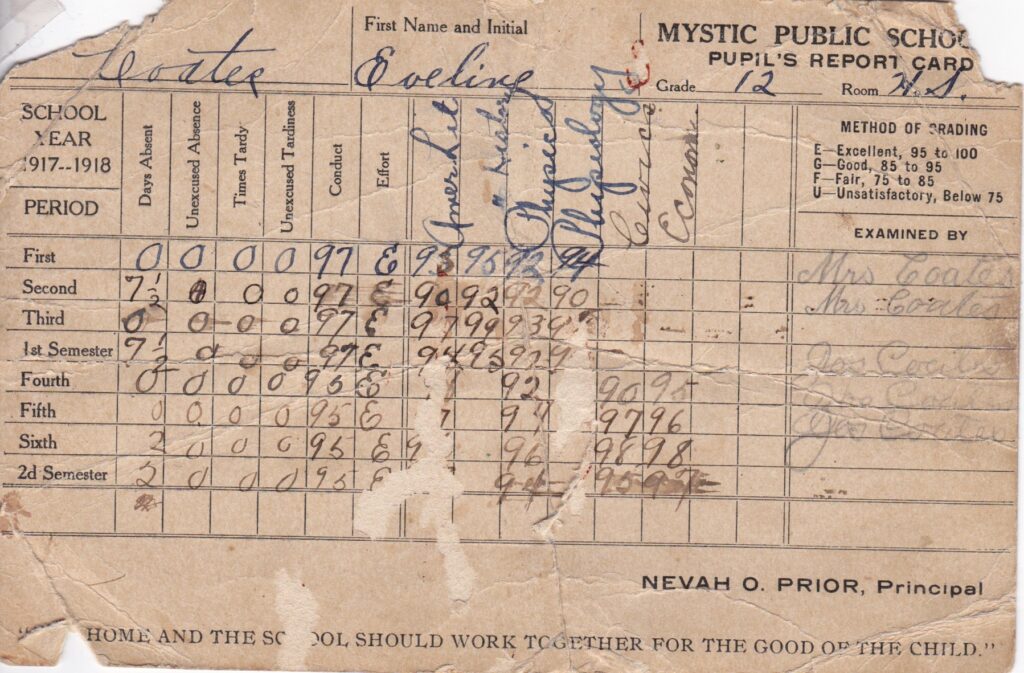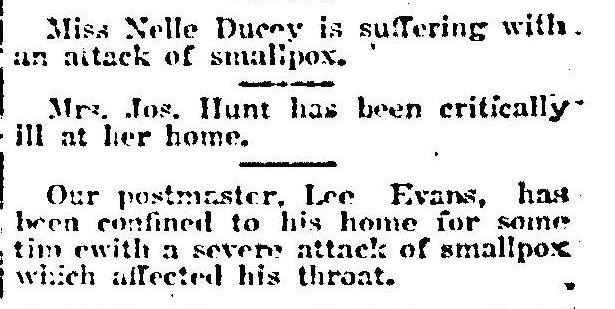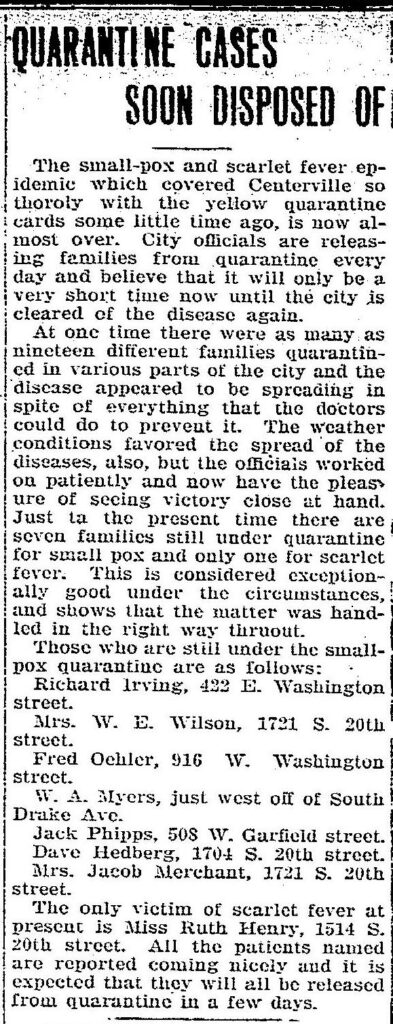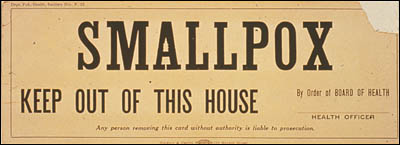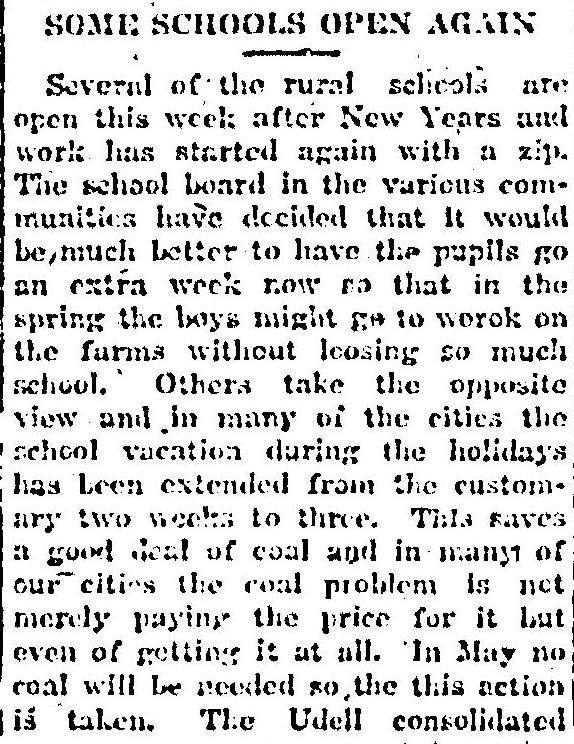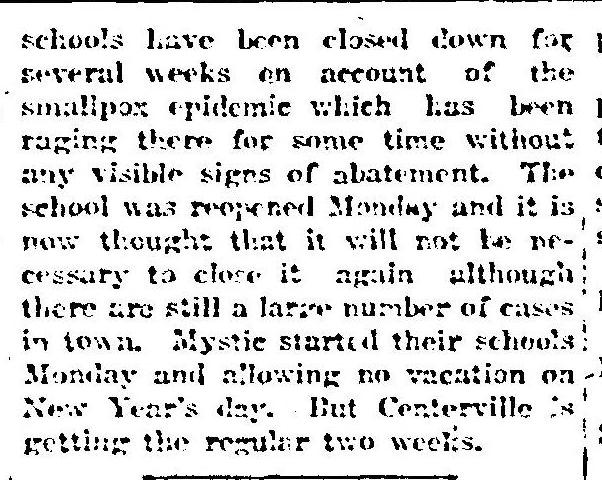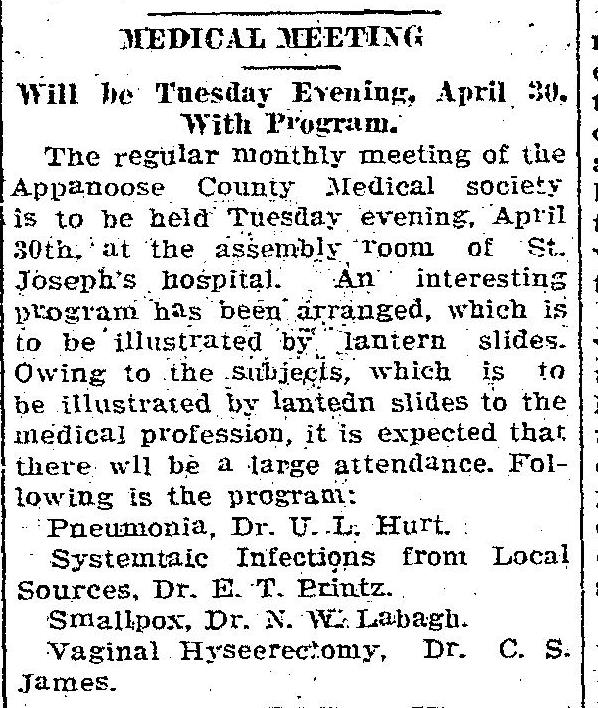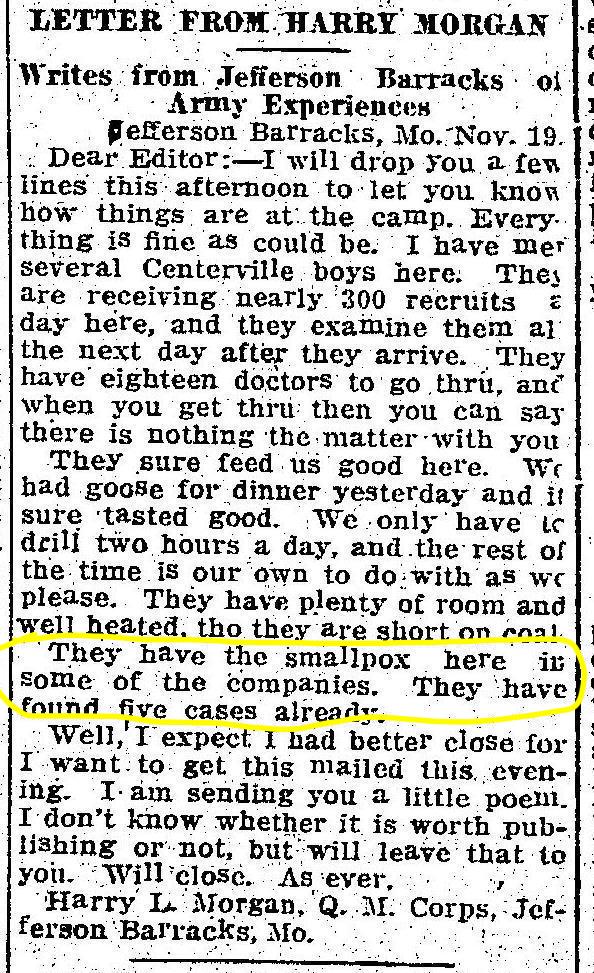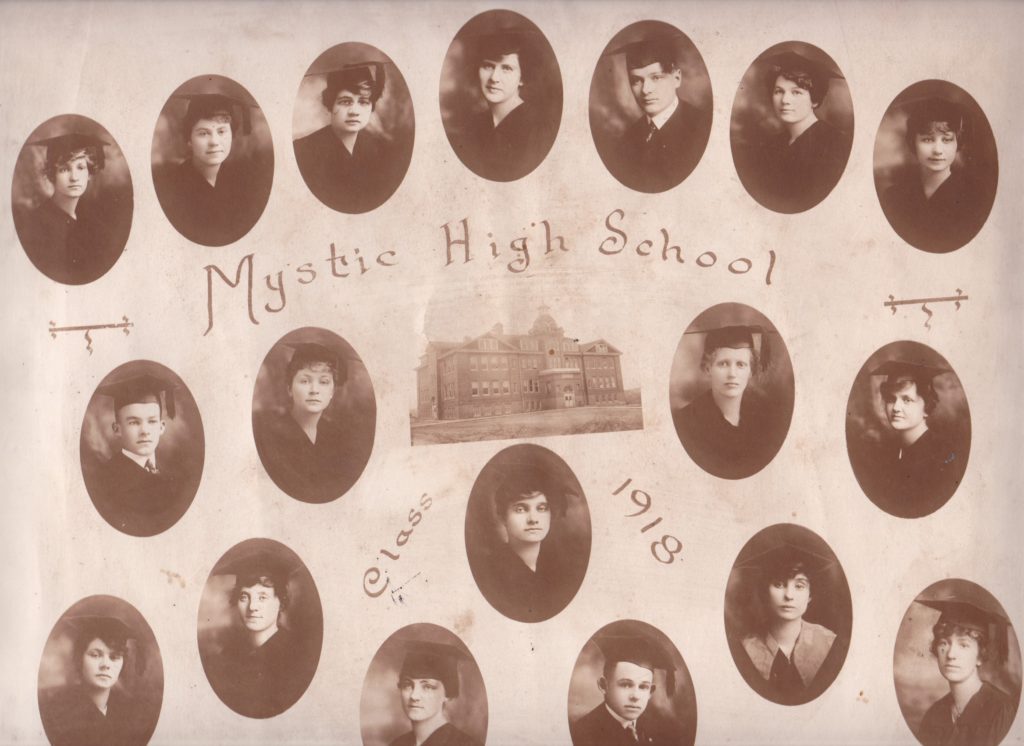
I shared a photo of my grandmother Eveline Coates’ high school graduating class in Mystic, Iowa a few weeks (now months!) ago. Along with the photo and her diploma, a couple of other mementos were saved. One is the program for the Junior-Senior Banquet in honor of the graduating Seniors. It was interesting to see how World War I seemed to be the overarching theme of the festivities. I decided to take a deeper look at what her life may have been like during the 1917-1918 school year. There was a lot going on, a war and the beginning of an influenza pandemic to name the two biggies. See:
Eveline’s Senior Year, Part 1
Eveline’s Senior Year: The Draft and a Carnival
Eveline’s Senior Year: A Look Around Town
Eveline’s Senior Year: Musical Notes
Eveline’s Senior Year: Smallpox
Eveline’s Senior Year: What Are You Serving?
It is Independence Day weekend in the United States, which got me thinking about something my mother wrote about her childhood.


“We used to have family gatherings a grandma Coates’, especially holidays like July 4th. We would make home-made ice cream and grandma made root beer which was always cooling in the cave.“
Eveline was my mother’s mother and “grandma Coates” was Eveline’s mother. It made me wonder if Grandma Coates started making root beer for her own children and family when Eveline was a girl – possibly for the 4th of July in 1917 and 1918.
Unfortunately, we don’t have a family recipe for root beer saved among the recipe cards. But a quick google search led me to several recipes and images – mostly of advertisements and recipe booklets for yeast. Below is the cover and list of recipes from Fleischmann’s in 1917.

Recipes: White Bread, Quick Method; White Bread, Sponge Method; White Bread, Over-night Method; Graham or Whole Wheat Bread; Bran Bread; Oatmeal Bread; Gluten Bread; Raisin Bread; Nut Bread; Parker House Rolls; Tea Biscuit; Tea Rolls; Dinner Rolls; Lunch Rolls; Wheat Muffins; Graham Muffins; English Muffins; Oatmeal Muffins; Cornmeal Muffins; Potato Biscuit; Potato Buns; Sally Lunn; Waffles; Wheat Griddle Cakes; Buckwheat Cakes; Plain Frosting; Currant Tea Ring; Children’s Buns; Sweet French Buns; Hot Cross Buns; English Bath Buns; Oven Scones; Zwieback; Cinnamon Cake; Apple Cake; Doughnuts; Coffee Cake; Toast; Bread Crumbs; Steamed Bread; Steamed Bread Pudding; Brown Betty; Savarin; Rum Sauce; Refreshing Summer Drinks; Lemon Pop; Root Beer; Kumyss; Dandelion Wine.
Fleischmann’s Yeast even included a poem about root beer in a pamphlet.
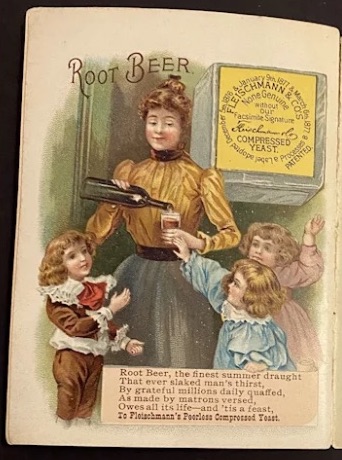
Root Beer, the finest summer draught
That ever slaked man’s thirst,
By grateful millions daily quaffed,
As made by matrons versed,
Owes all its life – and ’tis a feast,
To Fleischmann’s Peerless Compressed Yeast.
The Yeast Foam Company used this attractive ad and recipe.
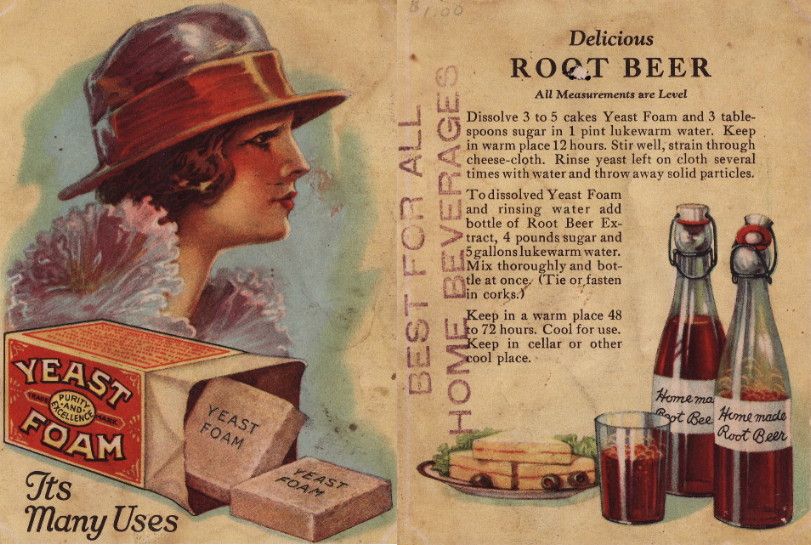
Old Thyme Recipes blog shares this recipe from a 1915 Fleischmann’s pamphlet:
Root Beer
1 cake Fleischmann’s Yeast
1 bottle root beer extract
5 gallons fresh water, slightly lukewarm
4 pounds granulated sugarIn extremely hot weather use one-half cake of Yeast.
Dissolve the sugar in the water, add the extract, then the Yeast thoroughly dissolved in a little water, mix well and bottle immediately, using strong bottles or jugs, and tie the corks in securely. Set in a warm place thirty-six to forty-eight hours; in cold weather, a little longer. Then remove to cellar or other place of even temperature, but do not put it on ice until a few hours before using.
I’m tempted to give it a try, but maybe a smaller batch! McCormick has two recipes on their website – one that uses yeast and one that doesn’t, if you’re game.
This was also the time of the Temperance movement and root beer was promoted as a tasty alternative to alcohol. And in mining communities like Mystic, where they sometimes referred to their community as “little Chicago,” I imagine it was hoped that root beer would slake the thirst of hard working miners.
In August of 1917, shortly after the United States joined WW1, the United States Food Administration (USFA) was created to focus on food rationing for the greater good. Restrictions on sugar were especially pronounced. “Sugar Means Ships” stated one popular poster. While Eveline’s mother may have served her family root beer on July 4, 1917, it is less likely that she did for July 4, 1918. (More on food and cooking in a future post.)
My mother and her mother (Eveline) always loved ice cream. When my mom and I lived with Eveline and my grandfather Tom Hoskins, grandma would order her groceries to be delivered on Saturdays. Every Saturday there was vanilla ice cream (Grandma’s favorite treat) and root beer (Grandpa’s favorite treat) after supper. Saturday was a good day!
Oh yes – about that cave … when my mother said the root beer was stored in the cave, she was referring to the cellar where they kept potatoes, canned goods, and so on. Not a real “cave” cave.
This is my contribution to Sepia Saturday, where the prompt photo encourages imagination. I encourage you to pay a visit!

Sepia Saturday provides bloggers with an opportunity to share their history through the medium of photographs. Historical photographs of any age or kind become the launchpad for explorations of family history, local history and social history in fact or fiction, poetry or prose, words or further images. If you want to play along, sign up to the link, try to visit as many of the other participants as possible, and have fun.





